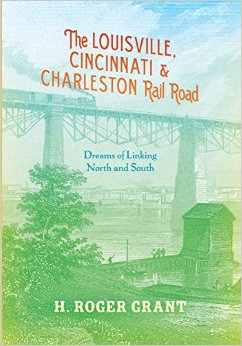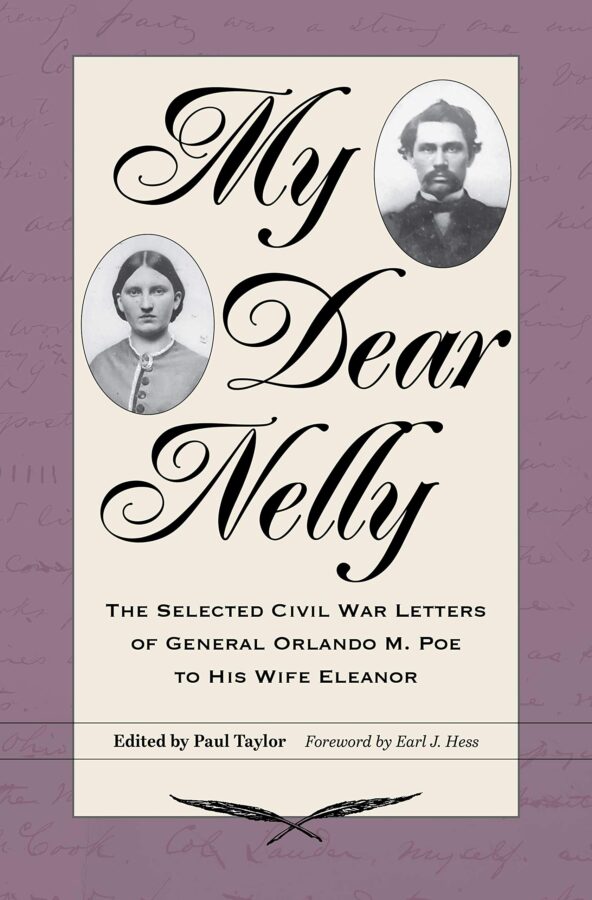The Louisville, Cincinnati & Charleston Rail Road: Dreams of Linking North and South by H. Roger Grant. Indiana University Press, 2014. Cloth, ISBN: 978-0253011817. $40.00.
 On July 4, 1836, three hundred and eighty delegates, representing nine states and sharing a big dream, gathered at the Church Street Methodist Church in Knoxville, Tennessee. The purpose of “The Great Knoxville Railroad Convention” was to discuss the construction of a railroad from Charleston, South Carolina, to Cincinnati. The line was to be dubbed the Louisville, Cincinnati & Charleston Railroad (LC&C).
On July 4, 1836, three hundred and eighty delegates, representing nine states and sharing a big dream, gathered at the Church Street Methodist Church in Knoxville, Tennessee. The purpose of “The Great Knoxville Railroad Convention” was to discuss the construction of a railroad from Charleston, South Carolina, to Cincinnati. The line was to be dubbed the Louisville, Cincinnati & Charleston Railroad (LC&C).
Veteran railroad historian H. Roger Grant recounts the history of the LC&C in rich detail in The Louisville, Cincinnati & Charleston Rail Road: Dreams of Linking North and South. Although the line never materialized, the story of the attempt—and of what transpired instead— is an interesting tale. It is also an important one, revealing much about attitudes toward railroad construction in the antebellum South.
A number of prominent men attended the Knoxville Convention, but South Carolina’s Robert Hayne quickly emerged as the gathering’s leading light. The former U.S. senator, best known for his defense of states’ rights in a celebrated floor debate with Massachusetts Senator Daniel Webster, presided over the convention and was chosen as president of the railroad.
The directors took a big step forward in late 1837 when they purchased the South Carolina Canal and Rail-Road Company (SCC&RRC). This gave them 136 miles of already laid track, much of it along their proposed route. In June 1842, the line completed trackage from Branchville, along the SCC&RRC, to Columbia. Soon, the LC&C was running a passenger train and an “accommodation” freight six days a week. Seasonal cotton shipments made the most money, but the road also hauled a variety of agricultural and manufactured goods.
Columbia, however, proved to be as far as the LC&C would reach. Despite early optimism, a pair of misfortunes sealed the line’s fate. The first was the Panic of 1837, one of America’s most severe and long-lasting economic depressions. Even the normally optimistic Hayne wrote in 1839, “The late and present commercial embarrassments of the country, which have shaken the foundations of credit and rendered unstable the commercial transactions of the world…have thrown obstacles in our way almost insurmountable” (102).
Hayne planned to soldier on “with the firm resolutions to secure success,” but he died of “bilious fever” on September 25, 1839, at the age of forty-eight (103). The panic had already stacked the deck against the LC&C. Perhaps Hayne could not have saved the line, but if anybody could have, it was the veteran politician.
Following Hayne’s death, control of the LC&C fell to John C. Calhoun and James Gadsden, the latter becoming president. Calhoun, the fire eating defender of slavery and states’ rights in the senate, and Gadsden, who would gain fame for negotiating a land purchase from Mexico in 1854, had ideas far different from Hayne’s. Both favored an entirely Southern route, with a western terminus at New Orleans or Memphis—not along the Ohio.
At the same time, South Carolinians and their political leaders were shifting their interest toward intrastate lines. They were not necessarily hostile to interstate projects; as Grant notes, “[a] solid railroad foundation might be laid that ultimately would achieve the goals of the Knoxville Railroad Connvention” (109-110). But those goals were no longer paramount, and if they included a northern terminus, they were anathema to men like Gadsden and Calhoun. Grant details the construction of a number of these intrastate railroads, the most ambitious being the Greenville & Columbia, which stretched more than a hundred miles.
Although the LC&C is the purported subject of the book, its history was brief, and Grant touches upon a number of topics not directly associated with the line. This is not a weakness. Chapter One, for example, provides an excellent summary of transportation in early America, from crude roads to canals to steamboats. The following chapter succinctly recounts the early history of railroads, starting in Great Britain before bringing the story across the Atlantic to America.
Less effective is Chapter Seven, titled “What Might Have Happened.” Grant concedes that speculating is, for a historian, “a risky business” (152). Yet he assumes the risks. He starts by addressing how a completed LC&C might have affected Charleston. His contention that the railroad would have stimulated the city’s business interests and perhaps spurred manufacturing is reasonable. So too is his argument that the long-distance road would have resulted in a more balanced flow of trade than that enjoyed by the typical Southern short line. Less convincing is Grant’s claim that the LC&C, by forging commercial ties between the South and the Northwest, could have prevented the Civil War. To be sure, the commercial connections would have been real. Still, it seems doubtful that a lengthy ribbon of steel could have overcome the divisiveness of Kansas-Nebraska, Dred Scott, John Brown, and the election of 1860.
Other flaws in the work are minor. Professor Grant makes extensive use of quotations, some of which are unnecessary. There are a number of typos (this reader counted nine), but none serious enough to interfere with a reader’s understanding of the text. The maps included are of high quality, but there could have been more of them. A map of South Carolina’s rail network would have been especially helpful. Finally, whenever italics appear in a quotation, the author adds intrusively “italics in original.”
These minor quibbles aside, Professor Grant has produced an outstanding work on an important element of American railroad history. Grant has devoted much of his life to the story of America’s railroads, and it shows. The book is rich in detail, and he very skillfully places what was happening in South Carolina within the context of railroad history throughout the country. The endnotes reveal an extensive mining of primary and secondary sources. In short, The Louisville, Cincinnati & Charleston Rail Road tells an important story—and tells it well.
Roger Pickenpaugh is the author of a number of books, including Rescue by Rail: Troop Transfer and the Civil War in the West, 1863 (1998).
